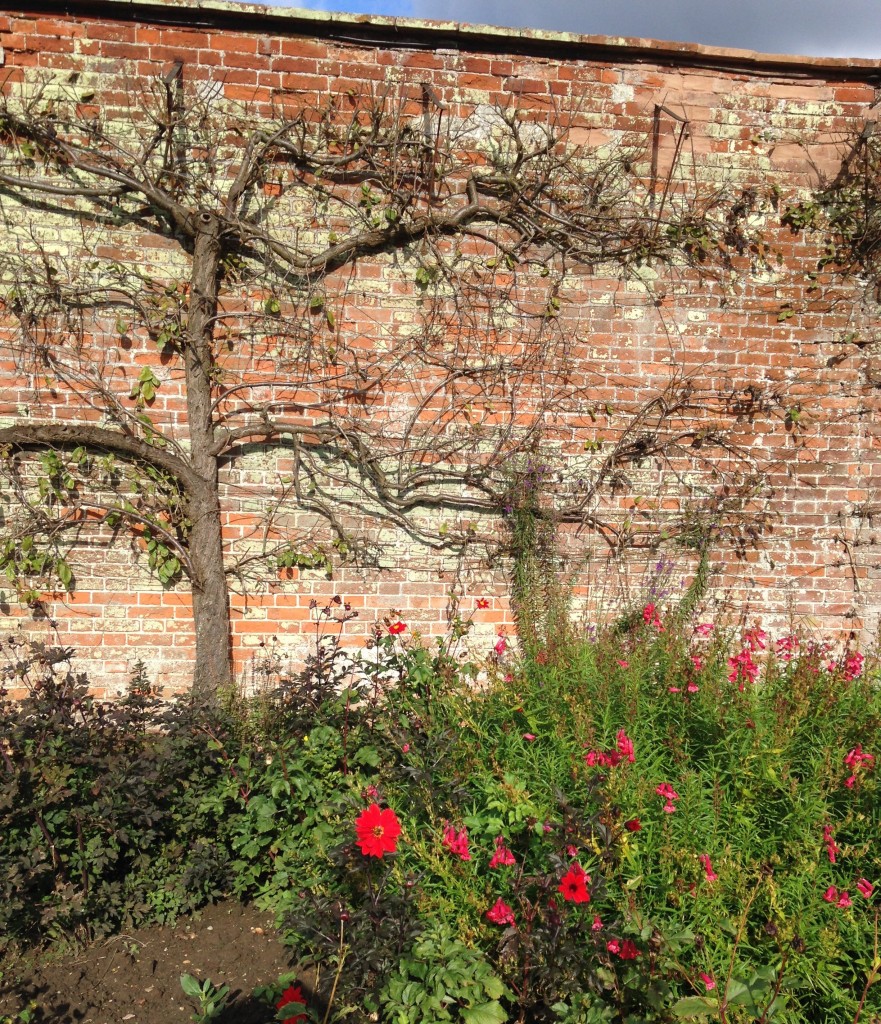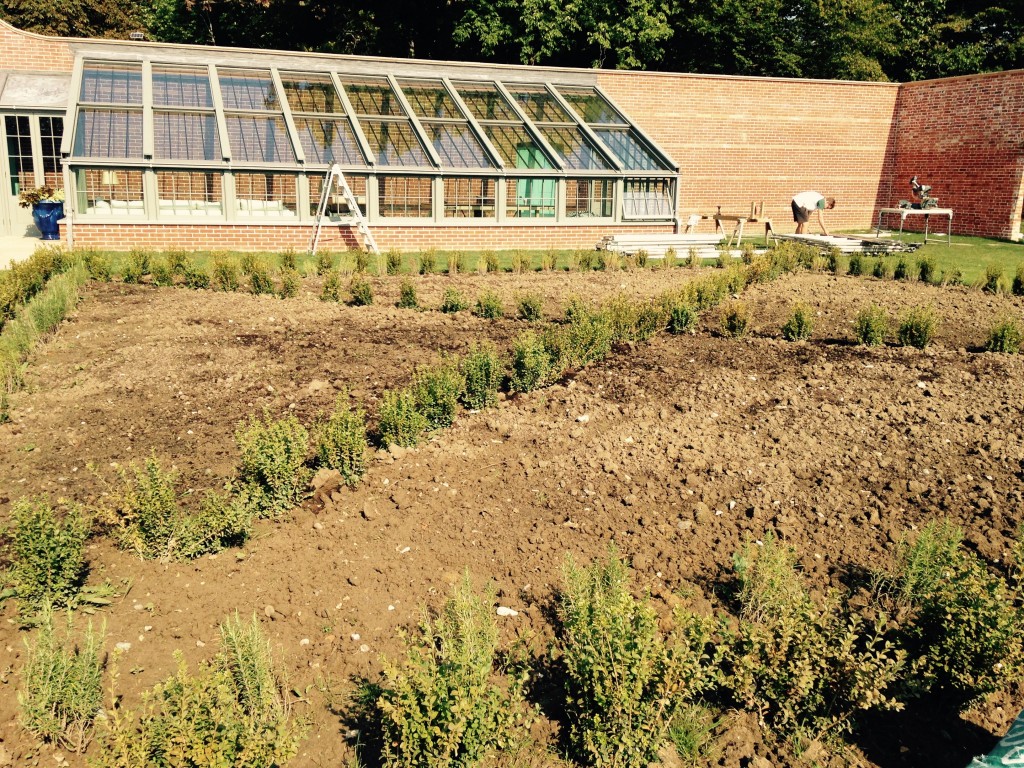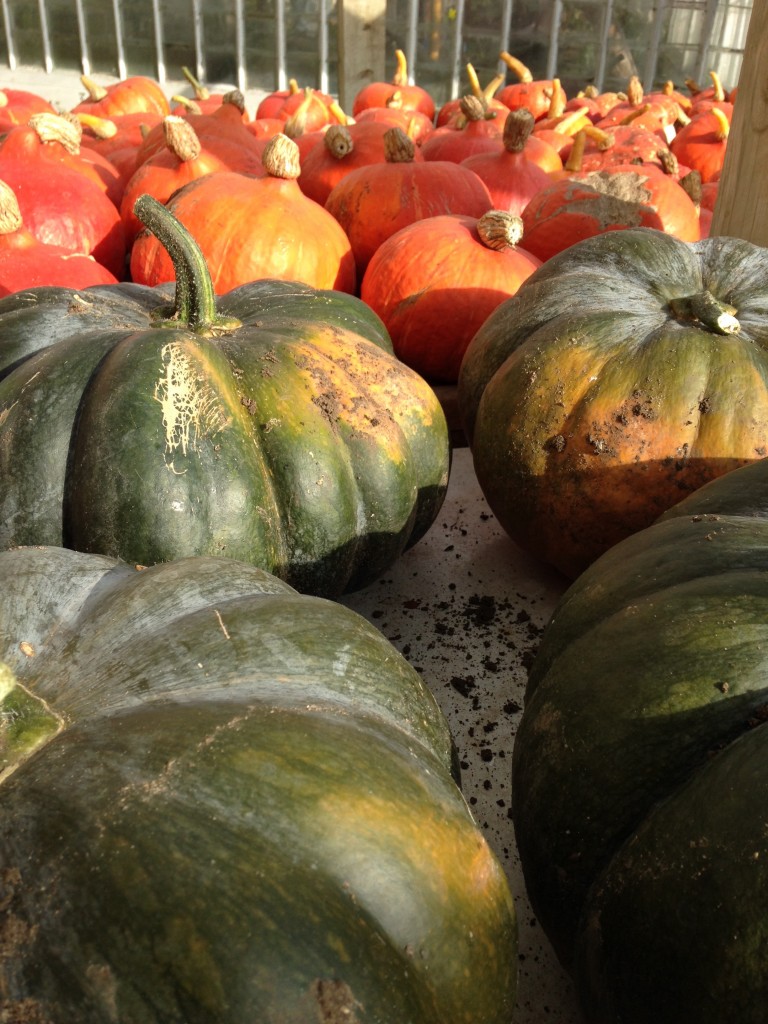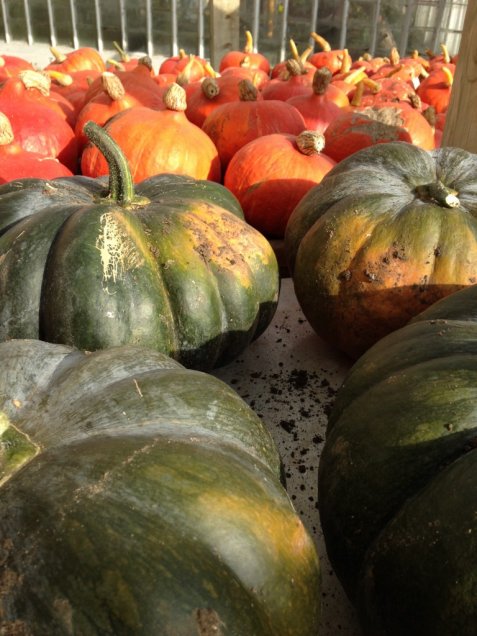 This year walled garden curiosity has quietly gripped me. It started on the Isle of Mull in a squall, taking refuge behind the mossy stone of a 4 acre walled garden. The kind climate of the Gulf Stream had allowed the rarest of shrubs and trees to flourish. Back in Suffolk, a walk through sandy onion-filled fields surrounded by creaking pines led to the out buildings of a large estate. We peered through a tooth-gaped gateway in the walls into an emptiness of tussock grass and waving brambles. Come the beginning of autumn, Will Kitchener showed us round works in progress at Sibton Park. The Walled Garden is being restored for upmarket holiday accommodation. The acreage in the middle is to be made over to vegetable beds and new fruit trees trained up the walls.
This year walled garden curiosity has quietly gripped me. It started on the Isle of Mull in a squall, taking refuge behind the mossy stone of a 4 acre walled garden. The kind climate of the Gulf Stream had allowed the rarest of shrubs and trees to flourish. Back in Suffolk, a walk through sandy onion-filled fields surrounded by creaking pines led to the out buildings of a large estate. We peered through a tooth-gaped gateway in the walls into an emptiness of tussock grass and waving brambles. Come the beginning of autumn, Will Kitchener showed us round works in progress at Sibton Park. The Walled Garden is being restored for upmarket holiday accommodation. The acreage in the middle is to be made over to vegetable beds and new fruit trees trained up the walls.  I’ve seen one or two more in Suffolk. Owners battling with box blight to keep the spirit of the place going or gone radical with a tip top designer to bring in 21st century planting. There was also a lecture by Dan Pearson where he had turned all to turf and cut a large concave bowl out of the middle for lying on and star-gazing. Most of these places ache with the ghosts of a large roll call of estate servants, glamorous guests and shooting parties. They hint at the the diaspora of rural communities. In “The Artist in the Garden: A Year in a Suffolk Walled Garden” Jason Gathorne-Hardy writes historically of Glemham House as “ built to be semi-independent, operating much like a large ship”. That of course means fed by its land.
I’ve seen one or two more in Suffolk. Owners battling with box blight to keep the spirit of the place going or gone radical with a tip top designer to bring in 21st century planting. There was also a lecture by Dan Pearson where he had turned all to turf and cut a large concave bowl out of the middle for lying on and star-gazing. Most of these places ache with the ghosts of a large roll call of estate servants, glamorous guests and shooting parties. They hint at the the diaspora of rural communities. In “The Artist in the Garden: A Year in a Suffolk Walled Garden” Jason Gathorne-Hardy writes historically of Glemham House as “ built to be semi-independent, operating much like a large ship”. That of course means fed by its land.  This took me to Lady Cranbrook, for the book is about her productive kitchen garden, set like a hidden emerald within an octagonal pattern on a hilltop embedded in the most gracious parkland. She lent me “Life in the Gardener’s Bothy” which takes the reader down a rabbit hole to the world of Head gardeners, journeying gardeners and a network of horticulture, learning and plant hunting. The heyday of country house gardens was in the 18th century and beyond the mansion and pleasure gardens an army of gardeners would be growing carnations, cucumbers, melons and seasonal varieties of grapes. Coils of hot pipes heated by boilers, refuelled overnight by staff, would keep temperatures exact in different growing houses, Microclimates round the walls would see the production of nectarines, apricots and peaches. The head gardener maintained a strict hierarchy with journeymen living in bothy accommodation, learning new skills and then being posted onto other great gardens round Britain to hone their knowledge. The first world war knocked the teeth out of this way of living and what survives at Glemham House is a pretty rare find. To step through the wooden door into the kitchen garden is a little like being Johnny Townmouse and Peter Rabbit rolled into one I immediately wanted to make a haiku out of apples, sun, history, seasons, chickens, colour, collections, productivity. It was a spirit-soaring experience because what is being produced is all used. Tomatoes are put through a passata machine, beans are dried, apples, onions and roots stored. Surplus stock is sold to local food shops and pubs. The fact that the eye is feasted too is a side benefit. I didn’t count the different varieties of tomatoes or the number of chillis rowed out in the chilli house but there are at least 4 types of cauliflowers and 18 beans including Borlotti and Vail of Tears. The rather aristocratic Araucana chickens were pecking their way through an immense patch of writhing Serpente di Sicilia gourds. Amongst them static black giant gourds like Galapagos tortoises. Four glass houses have busy work stations. This garden is managed by Lady C herself and Chris the full-time gardener and it works with full seasonal rhythm. At least 10 tonnes of farmyard manure get added every year. And this has been the case for over 40 years - no wonder the heavy clay yields such handsome crops. “ The fertility of the kitchen garden” said Lady C “is a tribute to all the gardeners who have worked there, past and present. When I came to Glemham in 1970, I knew very little about gardening, apart from roses – I knew nothing about vegetables at all. Almost everything I have learned is from our gardeners, and particularly from Alan Sharpe, who was a retired farm worker from Theberton and Stewart Cousins, who had helped run the horticultural department at Otley College. I owe them all a great debt”. This collaboration is definitely a way of life and one that works for the love of it. The advice for those of you that quail at this level of commitment to your Walled Garden is to turn it into a hedgehog sanctuary. This article first appeared in Essential Suffolk, November 2016.
This took me to Lady Cranbrook, for the book is about her productive kitchen garden, set like a hidden emerald within an octagonal pattern on a hilltop embedded in the most gracious parkland. She lent me “Life in the Gardener’s Bothy” which takes the reader down a rabbit hole to the world of Head gardeners, journeying gardeners and a network of horticulture, learning and plant hunting. The heyday of country house gardens was in the 18th century and beyond the mansion and pleasure gardens an army of gardeners would be growing carnations, cucumbers, melons and seasonal varieties of grapes. Coils of hot pipes heated by boilers, refuelled overnight by staff, would keep temperatures exact in different growing houses, Microclimates round the walls would see the production of nectarines, apricots and peaches. The head gardener maintained a strict hierarchy with journeymen living in bothy accommodation, learning new skills and then being posted onto other great gardens round Britain to hone their knowledge. The first world war knocked the teeth out of this way of living and what survives at Glemham House is a pretty rare find. To step through the wooden door into the kitchen garden is a little like being Johnny Townmouse and Peter Rabbit rolled into one I immediately wanted to make a haiku out of apples, sun, history, seasons, chickens, colour, collections, productivity. It was a spirit-soaring experience because what is being produced is all used. Tomatoes are put through a passata machine, beans are dried, apples, onions and roots stored. Surplus stock is sold to local food shops and pubs. The fact that the eye is feasted too is a side benefit. I didn’t count the different varieties of tomatoes or the number of chillis rowed out in the chilli house but there are at least 4 types of cauliflowers and 18 beans including Borlotti and Vail of Tears. The rather aristocratic Araucana chickens were pecking their way through an immense patch of writhing Serpente di Sicilia gourds. Amongst them static black giant gourds like Galapagos tortoises. Four glass houses have busy work stations. This garden is managed by Lady C herself and Chris the full-time gardener and it works with full seasonal rhythm. At least 10 tonnes of farmyard manure get added every year. And this has been the case for over 40 years - no wonder the heavy clay yields such handsome crops. “ The fertility of the kitchen garden” said Lady C “is a tribute to all the gardeners who have worked there, past and present. When I came to Glemham in 1970, I knew very little about gardening, apart from roses – I knew nothing about vegetables at all. Almost everything I have learned is from our gardeners, and particularly from Alan Sharpe, who was a retired farm worker from Theberton and Stewart Cousins, who had helped run the horticultural department at Otley College. I owe them all a great debt”. This collaboration is definitely a way of life and one that works for the love of it. The advice for those of you that quail at this level of commitment to your Walled Garden is to turn it into a hedgehog sanctuary. This article first appeared in Essential Suffolk, November 2016.
